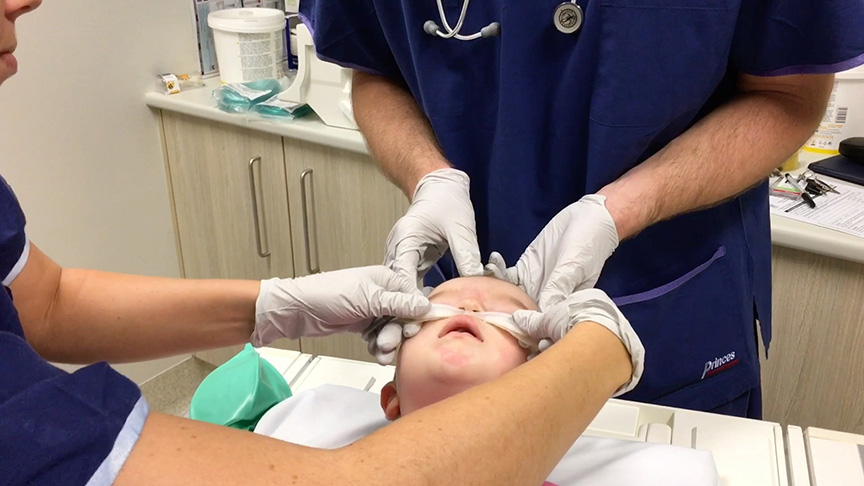
Children requiring airway surgery could soon benefit from a new non-invasive anaesthetic technique thanks to a national study led by researchers at the Queensland Children’s Hospital (QCH).
The high flow oxygen for children’s airway surgery trial (HAMSTER) compared the previous standard oxygen delivery method (via a throat or nose tube/catheter), with the new high-flow approach that delivers a higher volume of air and humidified oxygen via the nose, making it easier for patients to breathe.
The trial involved 530 children aged between 0 and 16 years requiring airway surgery at five Australian hospitals — QCH, Perth Children’s Hospital, the Royal Children’s Hospital in Melbourne, Westmead Children’s Hospital and Adelaide’s Women’s and Children’s Hospital.
QCH paediatric anaesthetist, and lead researcher, Associate Professor Susan Humphreys said the four-year trial was the largest paediatric worldwide trial to date investigating oxygenation techniques in surgery.
“We investigated two main outcomes − firstly, the incidence of having to interrupt the surgeon to improve oxygen levels and secondly, how low the oxygen levels dropped,” she said.
Nearly 90 per cent of patients received oxygen either by high flow or the previous standard delivery method (via a throat or nose tube/catheter), completed their intended surgery without interruption.
“The results show that the new technique of using high-flow oxygen is as safe as the standard method and offers an alternative to the anaesthetist in deciding how best to deliver oxygen to these children during the anaesthesia,” Associate Professor Humphreys said.

Airway surgery is a common but complex procedure, posing challenges for the anaesthetist and surgeon, given they share the same operating field — the upper airway.
Associate Professor Humphreys said: “Internationally, clinicians are looking at the work of our Australian anaesthetists and ear, nose and throat specialists, who have been able to eliminate uncertainty about the optimal oxygenation methods during complex procedures.”
“These results suggest both approaches are suitable alternatives to maintain oxygenation and minimise interruptions during the procedure, potentially leading to better patient outcomes.”
The Queensland Children’s Hospital has been an international leader in the use of high-flow nasal oxygen (HFNO), with subsequent trials underway to compare anaesthetic techniquesfor bronchoscopy and gastroscopy procedures.
This research builds on the success of previous clinical trials (Paris-1 and Paris-2), led by Professor Dr Andreas Schibler, which looked at the early use of nasal high-flow oxygen therapy in children aged 1 to 4 years with acute hypoxemic respiratory failure.
As a result of this research, high flow is currently used at the Queensland Children’s Hospital, to treat children and young people with bronchiolitis and children with acute hypoxemic respiratory failure (AHRF).
The HAMSTER trial was supported by The University of Queensland and funded by the Thrasher Research Fund (USA), the Australian and New Zealand College of Anaesthetists and the Society for Paediatric Anaesthesia in New Zealand and Australia.
The research was published in The Lancet Respiratory Medicine.